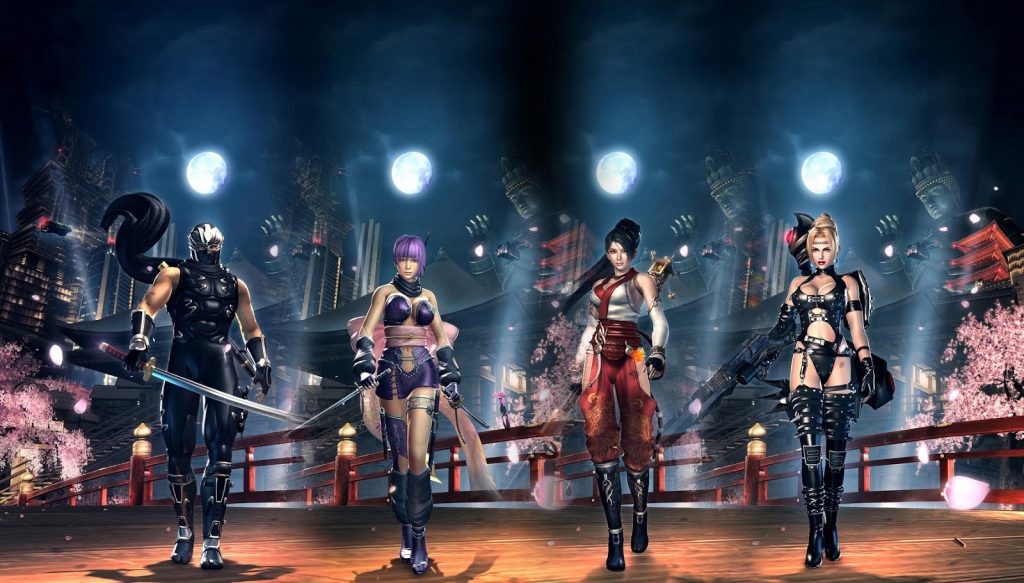The 90’s saw many games receive Expansion Packs that in essence were nothing more than a few extra missions. Their goal wasn’t telling a new tale but instead to grab what the player was familiar with and play with those elements to deliver something fresh to someone who had completed the base game. An example would be 1995’s Command and Conquer’s expansion pack titled Covert Operations, featuring nothing but new difficult missions that took risks in their design not seen in the main campaign. Because of their nature Expansion Packs were a simple thing to make and could be enjoyed by every fan in some fashion.
Ninja Gaiden first saw its introduction to this concept with the Mission Mode added in the Ninja Gaiden Black re-release, a mode expanded upon within Ninja Gaiden Sigma and later Sigma Plus. Since then the mode has become somewhat of a tradition in action games, from Vanquish’s Challenge Maps, Metal Gear Rising: Revengeance’s VR Missions, Transformers: Devastation’s Challenge Mode, God Hand’s Arena, God of War’s Challenge of the Gods and many others with even off-shoots like Yakuza featuring them.

It is in these modes we can face Alma with her sister in Ninja Gaiden, endure a battle of attrition in Vanquish or face a unique twist on a previously easy fight in God Hand. Other challenges offer different enemy layouts or tiny little experiments like trying to protect a damsel in distress from archers in Ninja Gaiden Black or sneaking past a very specific set of enemies in Metal Gear Rising: Revengeance; challenges the designers didn’t dare give in the story for one reason or another.
The goals oals here are added longevity, usually complemented via an online Leaderboard urging people to get the highest score. They can also be used to train for harder parts of the game, God Hand for instance featured separate missions in its arena for each boss fight. Lastly they offer more experimentation as noted before, allowing the designers to try out things they weren’t sure would work in the main campaign. With its prevalence within the genre, we can ask this simple question though: what makes for a good mission mode? For such a simple feature that is present throughout the genre, it is rarely analyzed. So let’s do so and use Ninja Gaiden II as baseline.
Despite Ninja Gaiden Black and its Sigma re-release featuring it, the Mission Mode was absent from Ninja Gaiden II. As discussed in the previous article the game was plagued by both business- and personal issues nearing its completion. Because of this it is hard to pin down if its Mission Mode was originally planned to be in the game, but remained unfinished and was left out, or that it was always planned to be downloadable content in the future from the get-go. With a release date no less than 50 days after the game’s launch, arguments can be made for either side.

Released on the same day as a selection of new costumes, the Mission Mode offered a mixture of what was included in past titles: a set of challenges that could be explored on numerous difficulty settings. It also came with its own take on Ninja Gaiden Sigma’s Survival Mode expansion.
Ninja Gaiden II’s Mission Mode features 24 challenges total. The first eight being short bouts against a few waves of foes while later ones are miniature levels that see you ascend a large tower of foes ending with a boss fight, or offer tests of endurance against one hundred foes total. It is during these challenges that Ryu has all his weapons, a large health bar and – depending on the mission – some healing items. Throughout he only has one Ninpo slot though, indicating that you’re going to have to let your skill do the talking with only minimal magic to back you up. While by default set to the game’s easiest difficulty, you’ll need to up your skills, as beating a mission unlocks a higher difficulty for it. The legendary title of Master Ninja again awaiting you.
As you lay waste to your many foes you’ll suddenly see a green orb floating from a vanquish enemy. This is a Green Karma Essence, unique to Mission Mode. When absorbed it gives a modifier for your Karma Score, a neat extra for those that like to place high on Leaderboards. On the flipside absorbing it will fuel the strongest Ultimate Technique, giving players who don’t care for score an new way to bring the bloodshed.
Just like Blue Healing-and Red Ninpo Essence this new type of orb doesn’t appear if a foe is killed via an Ultimate- or Obliteration Technique, but unlike those two it does still appear when a combo reaches beyond 20 hits. This rewards players that keep combo chain going with some extra points while pushing them away from the overused Ultimate Techniques. A twist that would’ve been a welcome addition to the story mode where the score system pushed players to abuse the Ultimate Techniques, as such it is a shame to not see them make the transition to this mode with this expansion pack, even as an option.

Thanks to the new Green Essence the Leaderboards can get very interesting for those up to the task. The system is built around getting a x5 Karma modifier by picking up five orbs and then going wild with it. Only to then try to spawn a new Green Karma Essence just before the modifier expires, adding a new level of combat management to the already chaotic fights. If you want to get all the Achievements you’ll need to master this new but simple mechanic.
The final eight missions of the pack are Survival Challenges. In these you fight in a small arena until you die with only a single weapon. To get enough Karma Points for a Gold Medal you either have to last an eternity or smartly use your Green Essence as the challenge progresses with scripted waves of enemies, ending in a showdown with the fiendish version of Ryu’s rival Genshin.
Once defeated, the mission doesn’t end however. Instead it goes through all the waves again but on a higher difficulty setting, until you die. Because this survival mode offers a condensed version of Ninja Gaiden II, it can easily be enjoyed in bursts and thus be can be quite addictive. While playing though, some snags to surface however. The Survival Challenge maps lack walls outside of a few trees for wall-attacks, significantly limiting weapons like the Falcon’s Talons. Enemy combinations also stick to the more common combinations like Ninja Archers with Black Spider Clan foot soldiers or demonic Van Gelfs supported by Gajia as seen in the campaign; more interesting combinations could’ve spiced things up significantly. It would’ve been interesting if there was an option to have the mode be completely random in its enemy selection or feature a challenge-map creator akin to God of War III‘s Combat Arena.
As a whole though Ninja Gaiden II’s Mission Mode has most of the required offerings. There’s a mission to practice against the major bosses, there’s some uniquely flavored fights we didn’t dare experience in the campaign – like fighting Genshin and Elizébet at the same time – and the revamped karma system and Survival Challenges add replayability to an near infinite degree for those itching to master it. The mode also allowed Team Ninja to test the waters in some regards, giving us a glimpse of a more condensed form of Ninja Gaiden without all the platforming and customization. Things that might bleed into future games in the series.

鑒 reflection style 鑒
In this short section I reflect on the article from my own viewpoints as a gamer and lover of the genre instead of a critic.
It is with this article that we truly touch the last game piece of Ninja Gaiden Itagaki was involved with, however small it may have been. While Stinger will still feature him in the future, there are no further games with his name that need covering. While there is talk of him returning to the gaming-design scene in 2019, we’ll just have to wait and see.
As a piece of DLC, this pack was just interesting enough to warrant a closer look for me, if only because it features such a prominent mechanic of the genre as a whole. It is interesting to see that a mode, whether it was made by the man or not, can still have the feeling of being made by him for its insanity and absolute desire to be as game as a game can be.
Personally I love the DLC and consider it an essential part of the game that no one should miss out on. It is easy to pick up and something you can play before going to work or even just those 5 minutes before you do something that’s actually important in life. It offers a fun way to experiment with the game’s mechanics, try out new weapons and quickly test a theory. But as such it can also at times feel disconnected, which is why it is great that the campaign still exist. If it was just the missions it would grow tired very fast I feel.
斬 postscript notes 斬
- I originally wasn’t sure if I would write about this little piece, but when multiple users mentioned that they missed an in-depth look into the game’s Mission Mode, I obliged. Mixing it with an overall analysis on the concept of mission mode helped fill up the story;
- Special thanks to Iconoclast over on Twitter for helping me out with the finer details on the game’s Karma system;
- While I say that this is the final piece of Itagaki I’ll be covering, note that I haven’t covered Ninja Gaiden: Dragon Sword. Nor do I intend to;
- Though not being an action-game, I included Command and Conquer’s Cover Operations Expansion for it being the first game that introduced me personally to the concept when I was young.
源 sources 源
- https://www.shacknews.com/article/53526/ninja-gaiden-2-dlc-detailed
- https://www.shacknews.com/article/50986/itagaki-talks-ninja-gaiden-2
- https://www.engadget.com/2008/05/14/itagaki-on-ninja-gaiden-ii-dismemberment-difficulty-and-dlc/
- https://n4g.com/news/145635/itagaki-on-ninja-gaiden-ii-difficulty-dlc-andamp-more


1 Comment